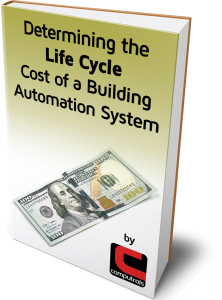by Ramon Torres
Electricity can be measured in different ways. One way is when it is measured as “Power”. As you may already know, power is the instant amount of energy that is being consumed by equipment or by a facility. Conversely, electrical “Energy” on the other hand, is a value of power being consumed for a determined amount of time that is not considered as instant.
An example of a motor that uses 1 kW of power for a duration of one straight hour is said to have used 1 kWh of energy. Another way of expressing this would be to say that power, which is instant, is the derivative of energy and energy is the integral of power over a determined period of time. Essentially, energy is the accumulation of power over time.
Power can be expressed in different ways depending on how it relates to the source that we are trying to measure. If we are trying to measure electrical power, then the unit would be expressed in watts [W] or kilowatts [kW], where 1 kilowatt = 1000 Watts. If we are measuring thermal power that is being produced or delivered by equipment, then this power unit can be expressed in [BTU’s/hour] or as [Tons]. A quick conversion between BTU’s/hr and Tons is given by the equivalence, such that:
1 Ton = about 12,008 BTUs/hr.
Thermal power can also be expressed in [kW] units but a conversion from BTU’s/hr to kW’s would be needed. This is given by dividing the BTU’s/hr value by 3412.14, meaning:
BTU’s/hr / 3412.14 = kW.
This result value (in kW) can be applied in Computrols Building Automation Software (CBAS) to determine the efficiency of a chiller where a calculation point can be created by taking the amount of cooling produced by a chiller (in kW) and then dividing it by the amount of power that is required to produce the cooling. In other words, we would have a unit expression that looks like: (kW/kW). The result would be a unitless number that is referred to as the coefficient of performance (or COP) of a chiller. The higher the COP number, the more efficient, and this number will vary depending on the instant load of the chiller(s). COP is commonly used to determine the efficiency of a chiller and usually neglects to take into account the external power consumptions needed to aid in the production of cooling such as those used by pumps to allow for water flow through the chillers.
A broader and better metric to determine efficiency would be to view a chiller plant as a whole in terms of the thermal power produced vs the electrical power required to produce it.
To do this, we can combine the power units for power to give us a ratio of efficiency expressed in [kW/Tons]. This expression gives us an indication of how much electrical power is being consumed for each Ton produced by an entire chiller plant in a building. This ratio can be used to determine how efficiently (or inefficiently) a chiller central plant is producing chilled water. The value of the instant kW usage would have to take into consideration all of the electrical power that is used to operate the central chiller plant. This would need to take into account all of the power used by the chillers, the cooling towers, and the power used by the pumps to circulate the water between the chillers and the building as well as between the chillers and their corresponding cooling towers.
Once we have this instant power usage value, we can divide this number by the amount of thermal power that is being produced by the chiller plant. The information on how many BTUs/hr or how many Tons are being produced by a plant may be given as data by the chillers themselves or by external meters. If this data information is not available, these values can be calculated in CBAS by knowing a few of the plant parameters such as CHW supply and CHW return temperatures as well as the amount of water flow.
In CBAS, you can set a calculation point for Tons, such that:
Tons = Flow[GPM] X (∆T) x (0.0417), where ∆T = return CHW temp – supply CHW temp
or if you prefer, you can use the formula:
Tons = [Flow[GPM] X (∆T)] / 24. Either way, you will get the same value for instant Tons.
Once you have these two needed values for electrical power over thermal power (the ratio of the electrical power value divided by the thermal power value), the result value would be the efficiency of the chiller plant expressed as [kW/Tons]. In this case, the smaller the value of the kW/Tons, the more efficient the plant is.
It is worthy to note that the efficiency of a chiller plant expressed as kW/Tons can also be converted to a COP value, where these two expressions are inversely proportional to each other such that:
COP = 3.5/(kW/Ton).
Meaning, if efficiency = 1kW/Ton, then COP = 3.5
In summary, Electrical Power is measured in watts (W) or kilowatts (kW), Electrical Energy is the power consumed during a determined amount of time and measured in watt-hours (Wh) or kilowatt-hours (kWh). Thermal power can be expressed as BTU’s/hr or as Tons, but it can also be expressed as kW.
These units above for power and energy are ones that are commonly used in the U.S. and we can combine these measurements to calculate and determine certain ratios in CBAS to showcase chiller plant efficiency.




